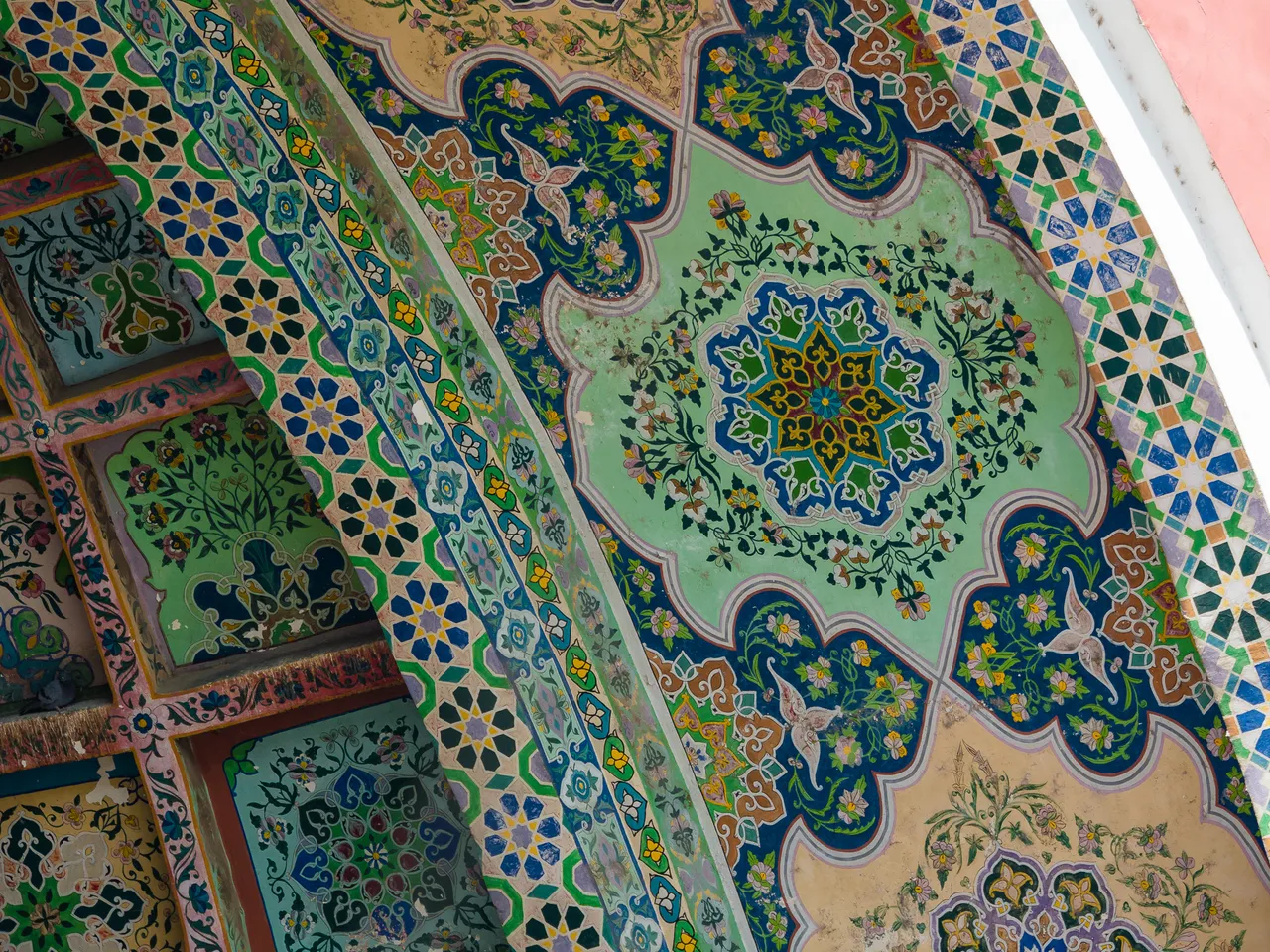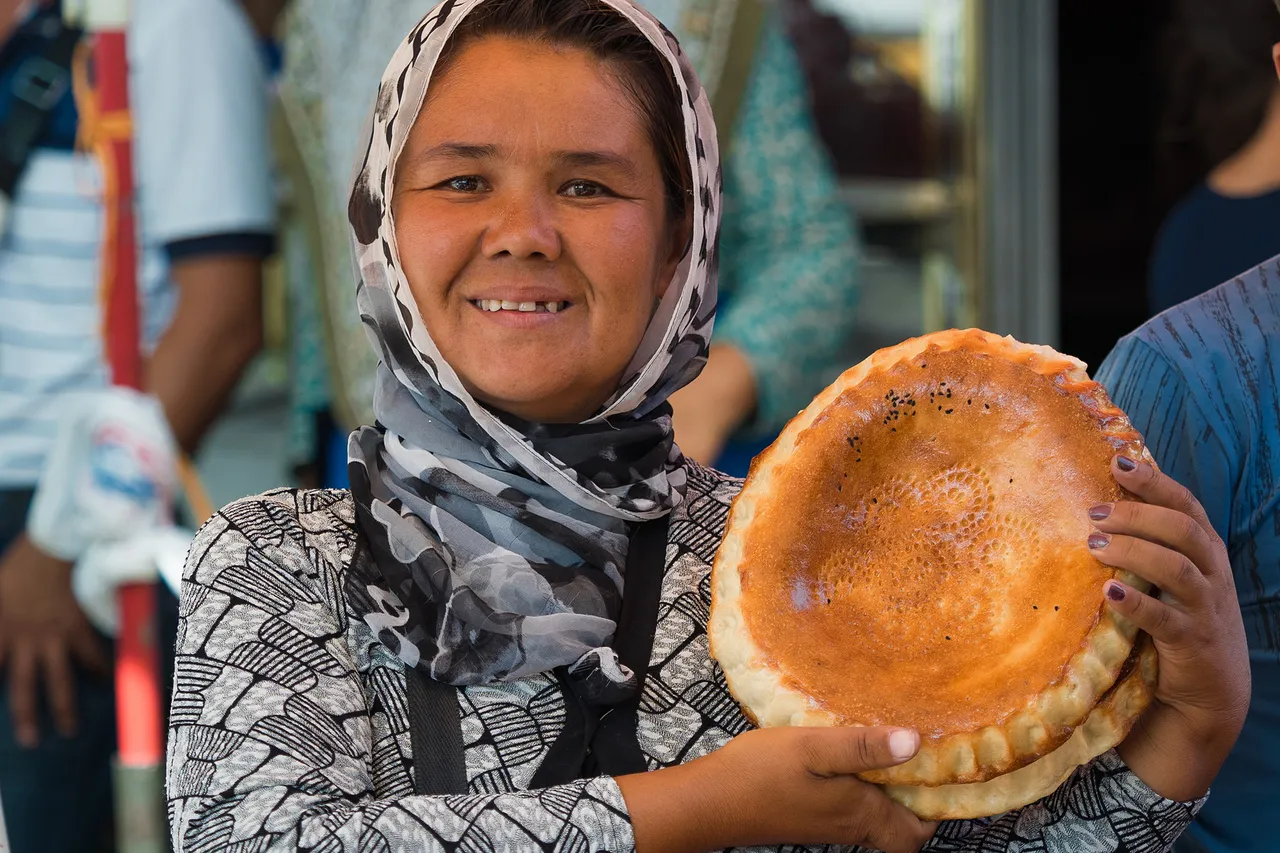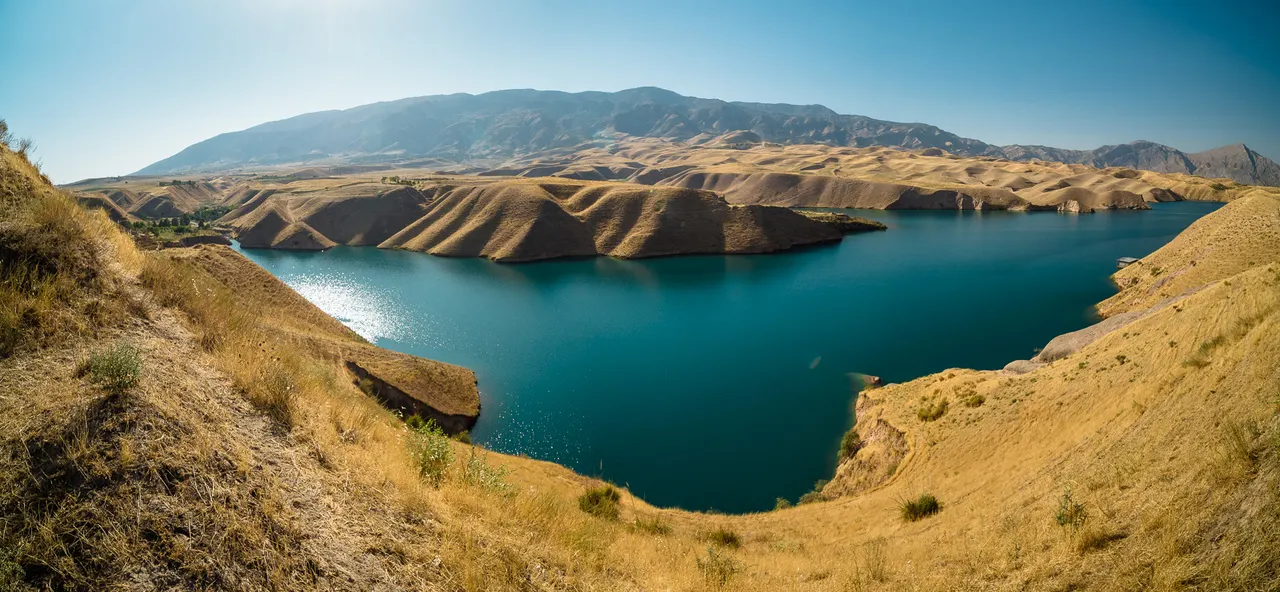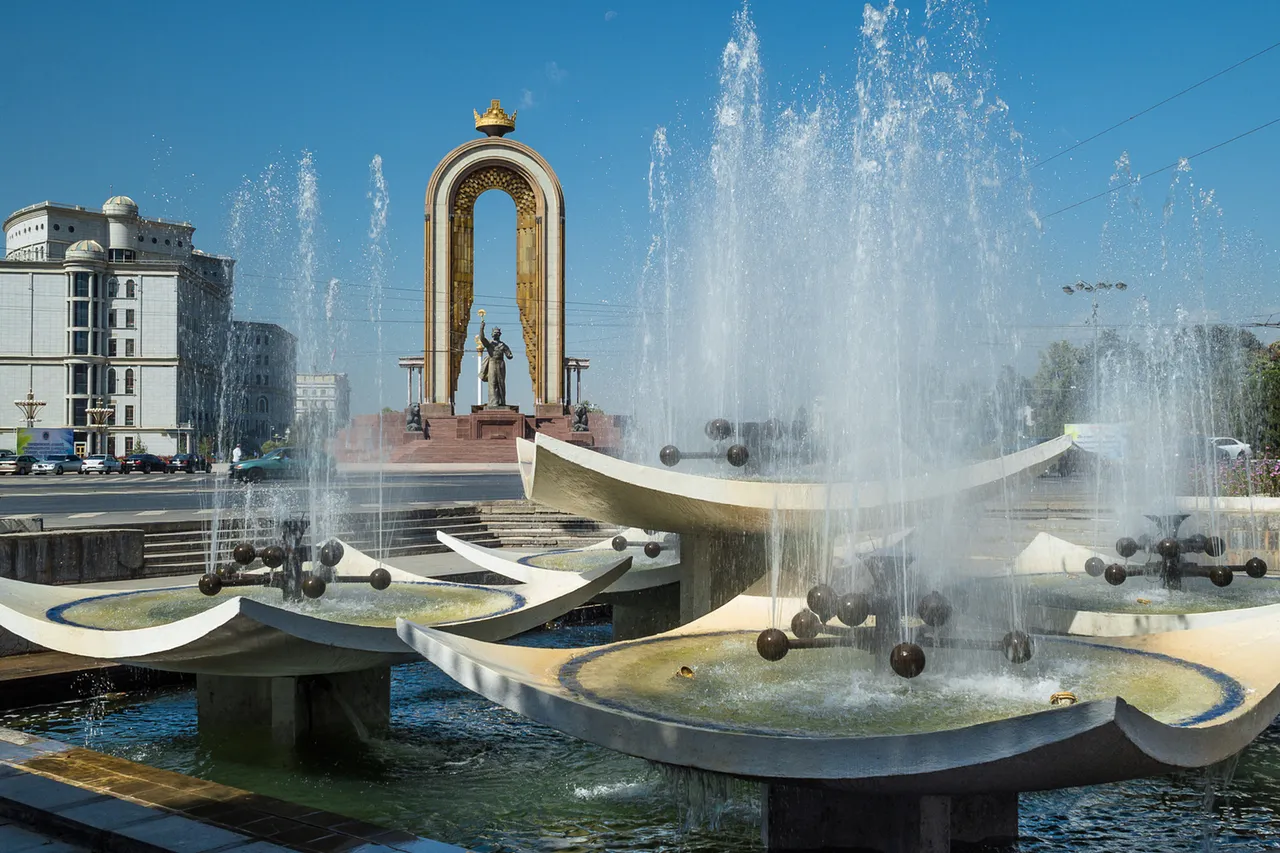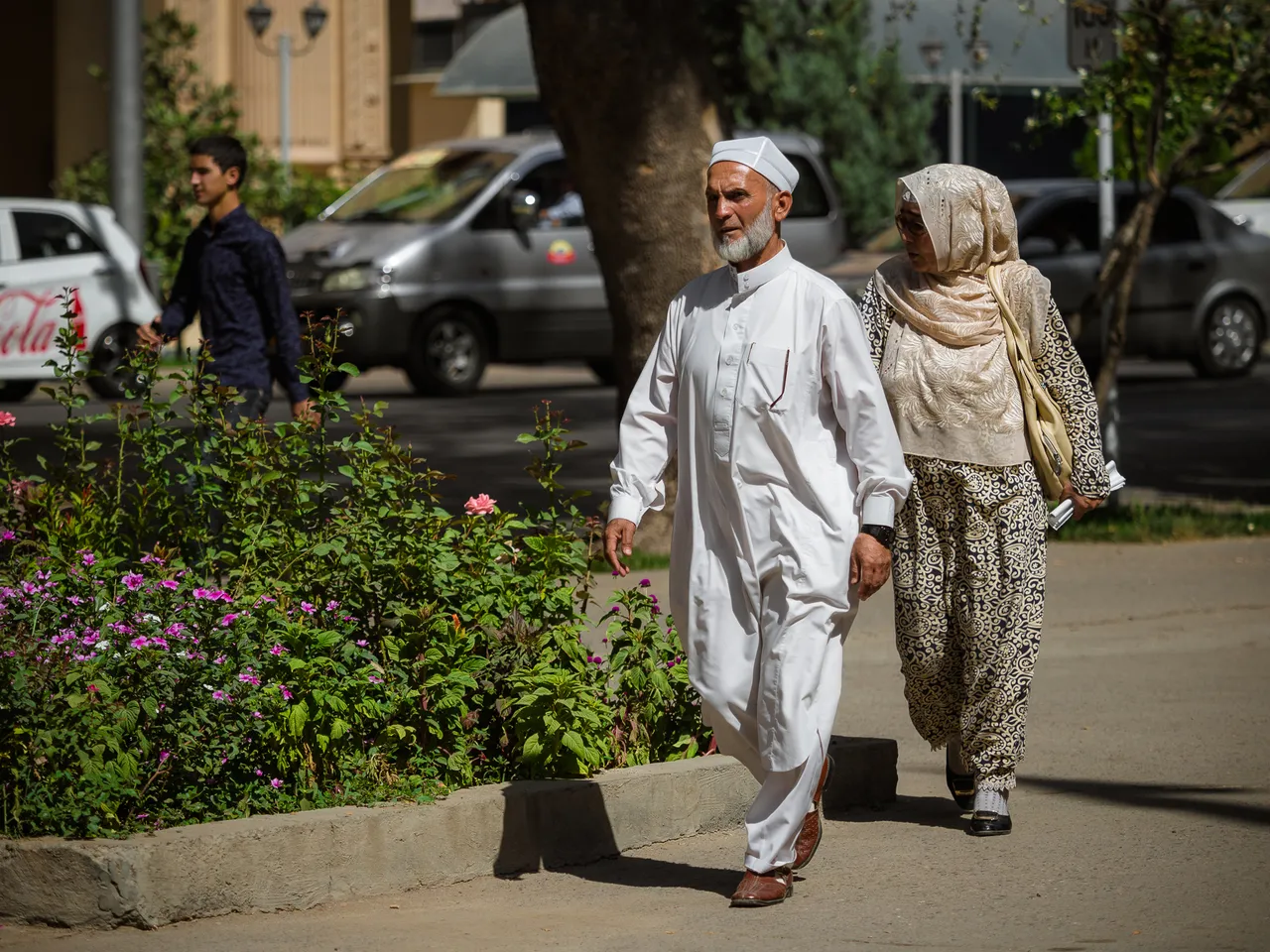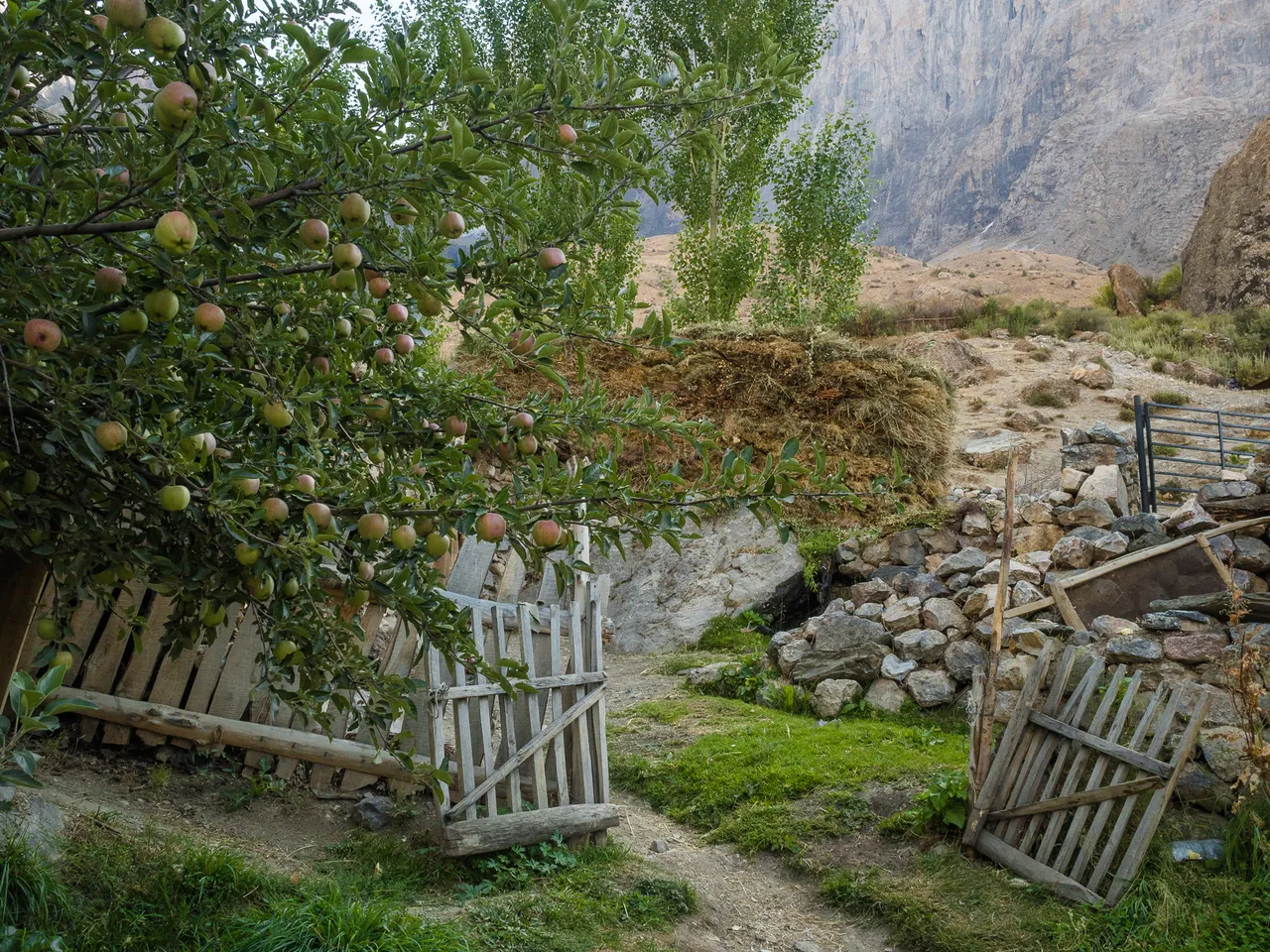Hi! I continue my story about the trip along the Pamir Highway. The post about the Kyrgyz part of the trip you can read here, and the first post from the Tajik series is here.
So, we are driving through Tajikistan.
The road takes us to Khujand city. This is one of the oldest cities in Central Asia and the place where Alexander the Great founded the most distant Greek settlement — Alexandria Eschate, which preserved Hellenistic culture for about 300 years. Later, Khujand was part of various countries and empires, including the USSR, and is now the second largest city in Tajikistan.
Photos above and below show the Jami Masjidi mosque (also called the Friday Mosque) with an ancient minaret decorated with Central Asian ornaments, and the Mausoleum of Sheik Muslihiddin near the market square. People are walking and children are playing in the square, and there are also a lot of pigeons which are clearly being heavily fed here.
 |  |
|---|---|
 |  |
Next to the square is the Panchshanbe Bazaar (or the Thursday market) — one of the largest covered markets in Central Asia. Its name in translation means "Thursday", the day on which trade used to be held here. Now, of course, it is open more than just one day a week.
Multi-colored ornaments cover the walls inside the market building, which appeared in the mid-twentieth century.
The design of the building shows a combination of Soviet and Central Asian architectural traditions.
It is here that the real color of a Central Asian city reigns, you can hear music and shouts of traders, a huge number of people coming here not only from the city itself, but also from its suburbs. A curious tourist should definitely visit such places to feel the atmosphere and life of local people.
All the vendors here were very friendly and smiled at us a lot, and were always happy to take pictures.
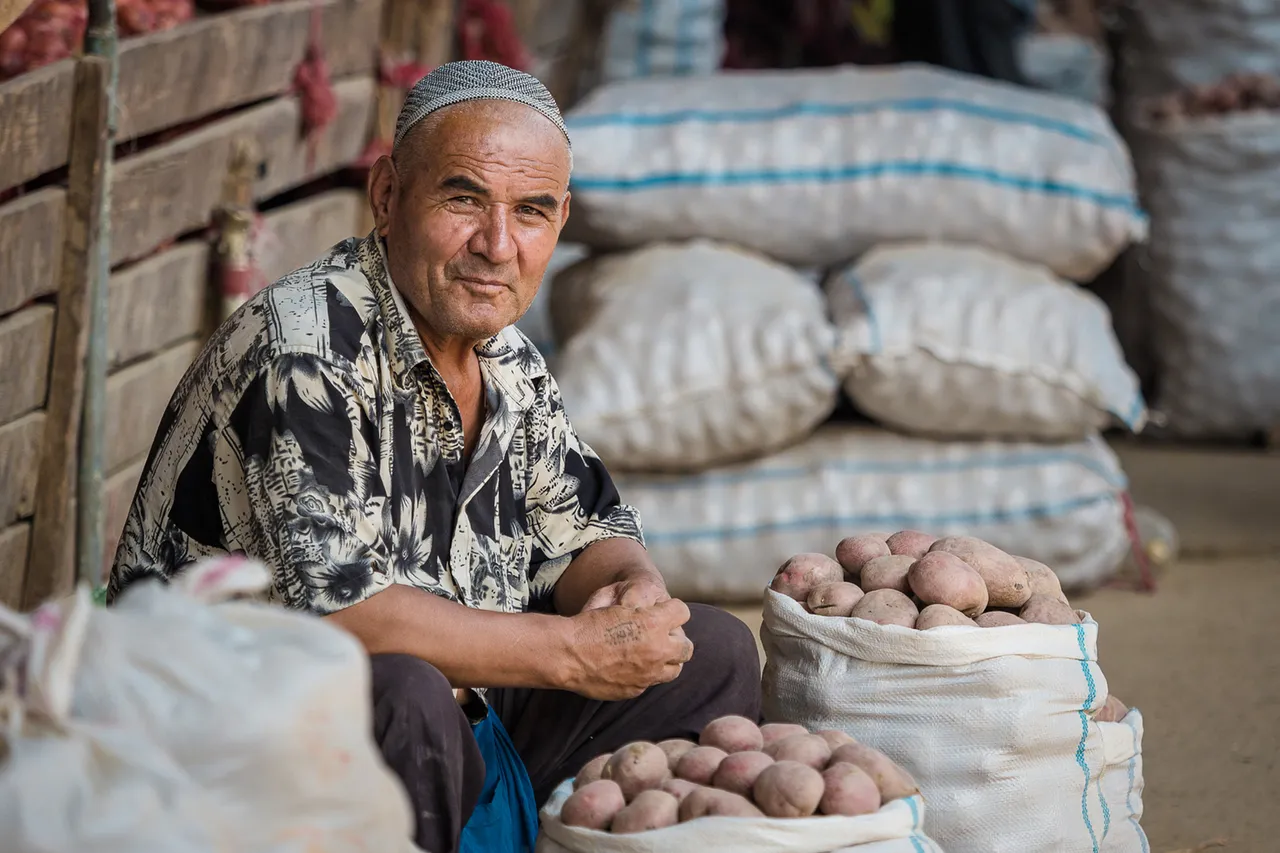 |  |
|---|---|
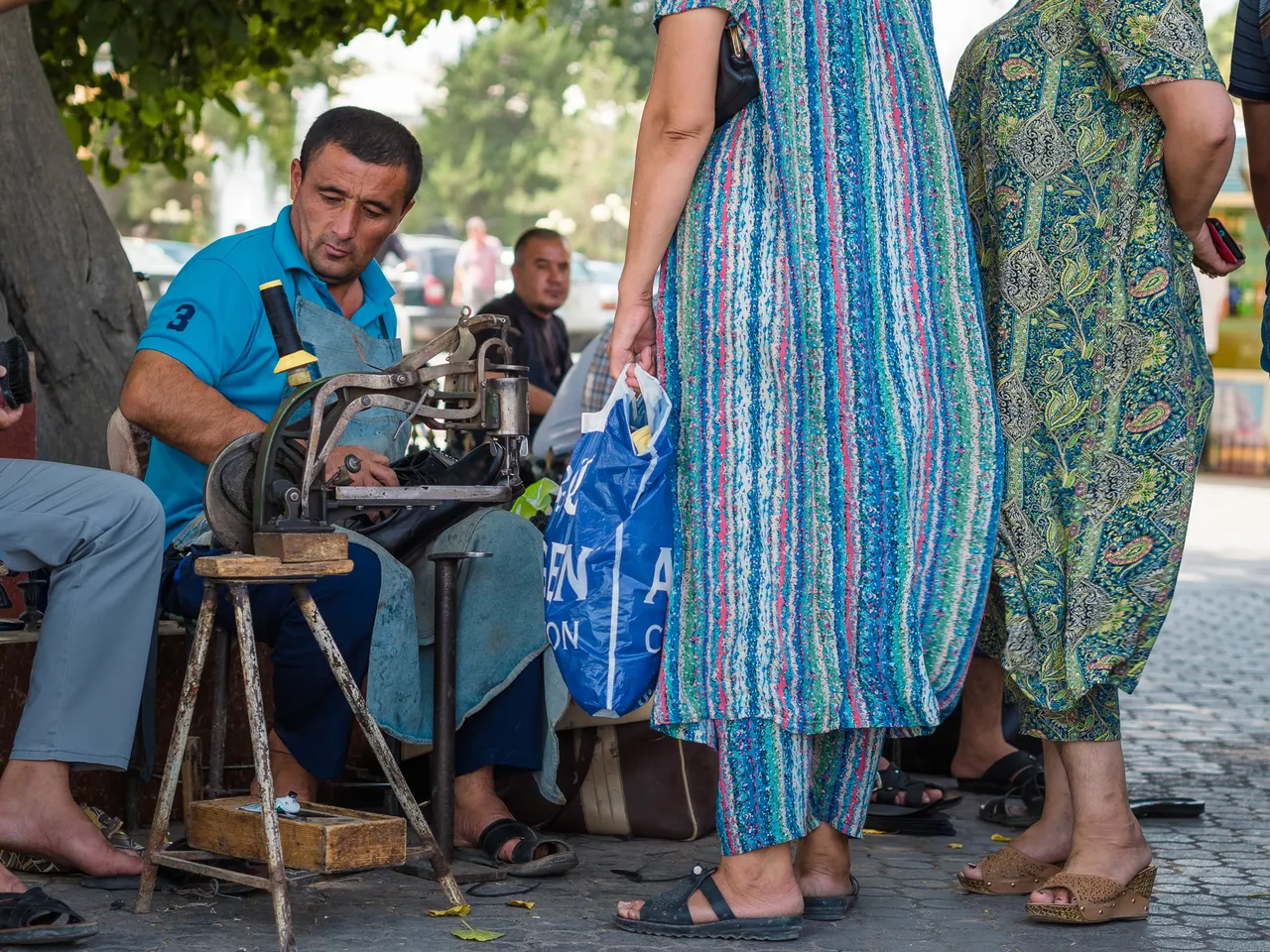 |  |
Here you can try hot national flatbreads, shashlik, vegetables, fruits and, of course, the very tasty pilaf, which I completely forgot to photograph.
And we came here to buy fruit - grapes, figs, peaches, watermelons and melons. Tajikistan has many sunny days and the fruit is sweet as honey. By the way, everything is good with honey here too - we saw many beehives, and even tasted honey from that very president's dacha.
 |  |
|---|
One place in Tajikistan particularly struck me - the Nurek reservoir. When we got to the Sharshar pass, amazing views opened up to us. Sandy hills and azure water, which had collected all the color of the sky. From the road among the hills it looked very impressive.
I realized that I simply had to launch a drone here — and it turned out that it was not in vain, from a bird's eye view the views became even more breathtaking. These patterns of deserted sunny-yellow hills, cut by turquoise tentacles of water, I will remember for the rest of my life.
 |  |
|---|
It was hot all around and we couldn't stand it: we found a place to swim, driving along the road (in the photo above the road is below on the left) to the cape where the pumping station was. In general, Lake Iskanderkul had already taught us a couple of days earlier that water can be icy, but here the it turned out to be a very comfortable temperature.
The old power line poles standing in the water hint at the man-made origin of this reservoir. There used to be a road here, but now you can only sail by boat. After swimming, having dined on fragrant melons and watermelons, we moved on.
We also briefly stopped in Dushanbe city, the capital of Tajikistan. Not nearly as ancient as Khujand, it began to grow and develop rapidly when it was declared the capital of the Tajik Autonomous Soviet Socialist Republic within the USSR, and later became the capital of the already independent country of Tajikistan. Now it is a rich and modern city with many fountains and shady alleys.
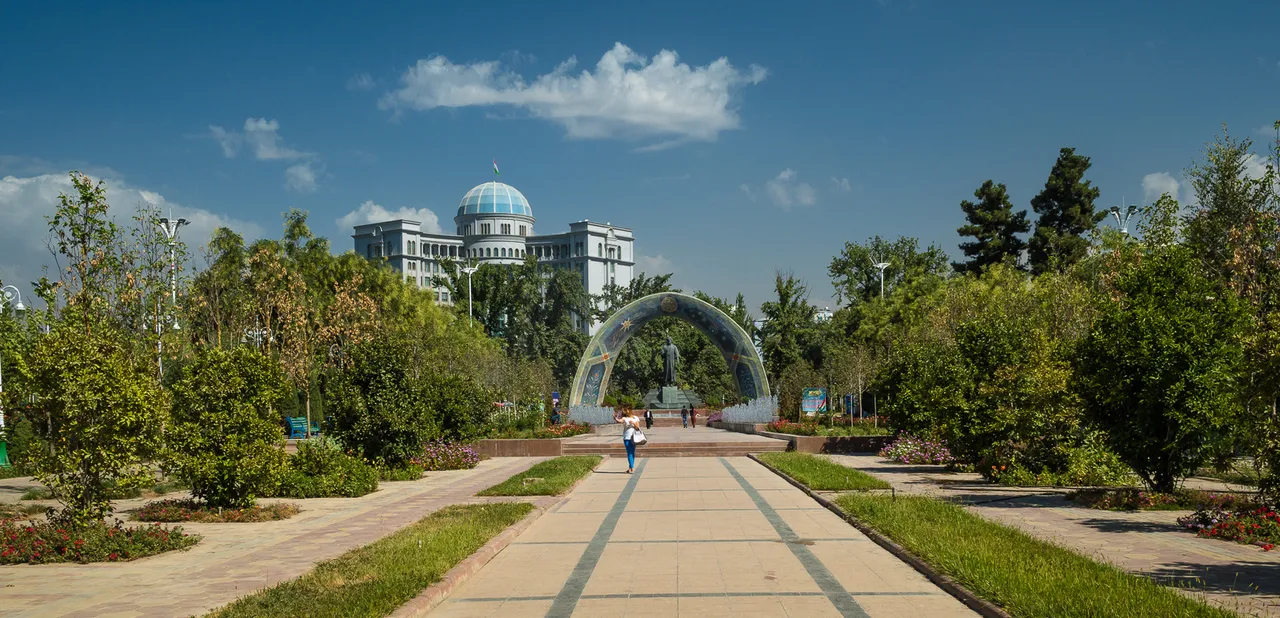 |  |
|---|
Dousti Square with a monument to Ismail Samani, in whose honor the former Communism Peak was renamed.
The clothes of city dwellers also show a Central Asian flavor, but there is also a fair amount of European clothing.
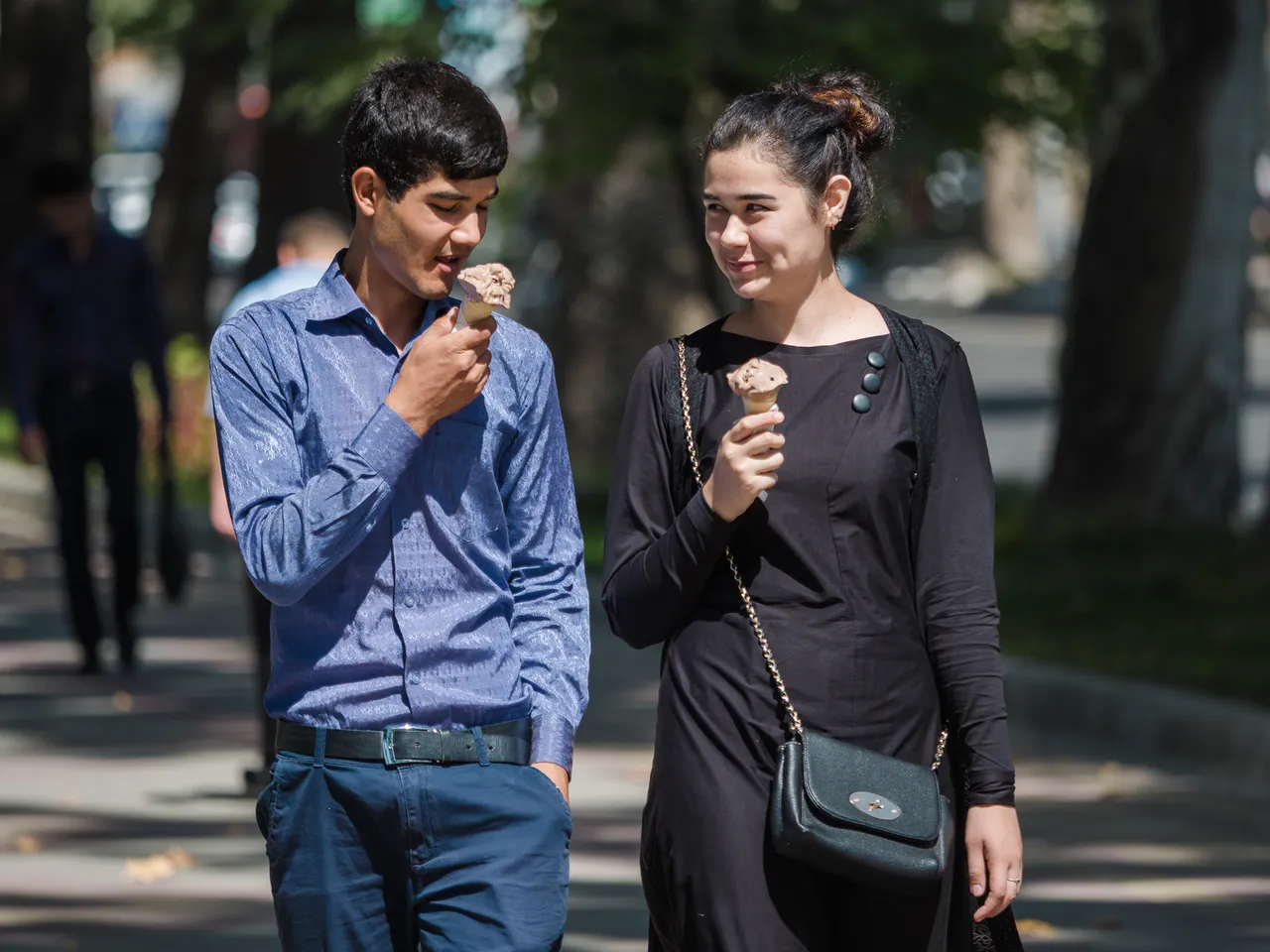 |  |
|---|
But these are all cities. And in the mountains, in the villages and kishlaks, there is a completely different life, different houses, different affairs and concerns of people, different clothes.
They graze their herds and dry rich harvests of apricots right on the flat roofs of their houses - and sometimes on the ground. The generous, hot sun quickly turns it into delicious dried apricots, which are so nice to eat in winter.
Large and tasty apples grow as if by themselves and just beg to be eaten.
Their ancestors built these kinds of huts and houses made of stones, clay and wood centuries ago — and even now people here build them the same way.

Of course, there are more modern houses, but these have retained their charm for so many years. How unusual and picturesque such small villages look with them!
In addition to apricots, hay is stored (temporarily?) here on the roofs, stockpiled for animals for the winter.
The locals go about their business leisurely, eat, rest and chat with each other towards evening, and look at us, the tourists, with interest and attention.
 |  |
|---|
And of course, when talking to them, we understood that they were friendly.
 |  |
|---|
And all this is surrounded by majestic and beautiful mountain landscapes.
Villages are often located along the banks of rivers or at least streams.
Sometimes when I travel I buy local hats and wear them. This time I had this cute tubeteika (skullcap). Many people smiled when they saw me and shouted: "It suits you very well!" What do you think?
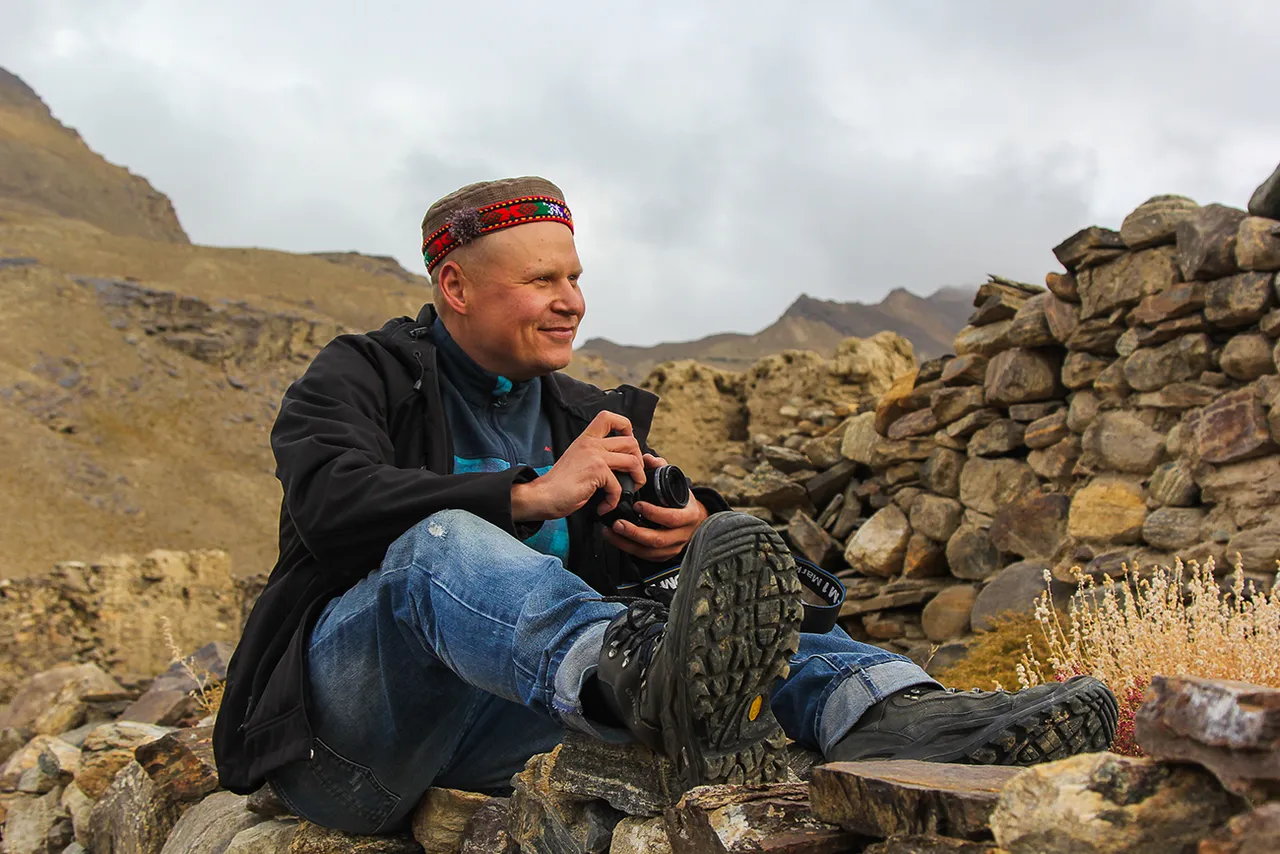
A photo of me in this tubeteika, which I really like. By Maria Nelasova.
The sun was setting behind the horizon, the whole world was transformed, painted in yellow and red tones. Hills, not far from the village of Guliston, resembled dunes, it seemed that we were somewhere in an endless desert, because the mountains were lost in the haze.
We had already seen a lot and realized that this country can attract the eye and amaze the imagination not only with its mountains. And there was still a lot of interesting things ahead of us.
To be continued...
It's better to watch the photos in high resolution.
Camera: DJI Mavic Pro and OLYMPUS E-M1 Mark II
You can also see my photos in my blog LJ and in my profile on RTraveler. You also can read a short interview with me here.


